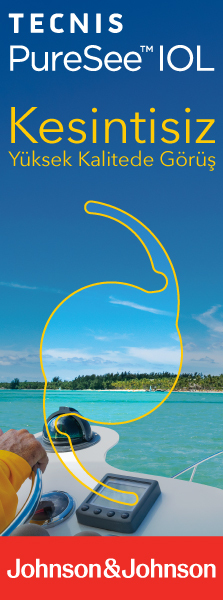TJ-CEO
2017 , Vol 12 , Num 3
A Rare Case With Aniridic Fibrosis Syndrome After Iris Diaphragm Intraocular Lens and Ahmed Valve Implantation in a Patient With WAGR Syndrome
1Uz. Dr. Ankara Training and Research Hospital , Department of Ophthalmology, Ankara - TÜRKİYE2Prof. Dr. Ankara Training and Research Hospital , Department of Ophthalmology, Ankara - TÜRKİYE Congenital aniridia is a rare, bilateral condition associated with foveal hypoplasia, nystagmus, cataract, glaucoma, keratopathy, and dry eye. Aniridic fi brosis syndrome is a newly recognized clinical entity characterized by progressive retrocorneal, cyclitic, or retrolenticular fi brosis which can lead to corneal endothelial decompensation, hypotony, and retinal detachment. A 6-year-old male presented with WAGR syndrome. At presentation he had mental retardation, nystagmus, bilateral rudimentary iris, and bilateral posterior polar cataract. Cataract extraction and implantation of an aniridia intraocular lens (IOL) was performed in the right eye. Glaucoma developed in the right eye approximately 2 months after cataract surgery. An Ahmed glaucoma valve was implanted in the right eye and prophylactic goniotomy was performed in the left eye. Nine months after glaucoma surgeries aniridia-associated keratopathy (AAK) was observed in both eyes (predominantly in the right eye). Keratopathy progressed during follow-up. At the 6th year follow-up aniridic fi brosis syndrome was detected in the right eye, with retrocorneal fi brotic membrane formation, inferior dislocation of the IOL, and endothelial decompensation. During the 6-years follow-up, intraocular pressure was controlled with 2 medications in the right and without medication in the left eye. The management of aniridia is often quite diffi cult because of the complex involvement of ocular structures. Although satisfactory results can be obtained with surgery for cataract and glaucoma, progression of AAK and development of aniridic fi brosis syndrome (especially in eyes with intraocular hardware) are the obstacles for good visual outcome. This is the fi rst case of aniridic fi brosis syndrome reported from Turkey. Keywords : Aniridic fibrosis syndrome, congenital aniridia, WAGR syndrome





